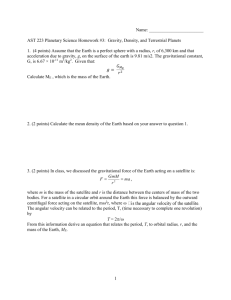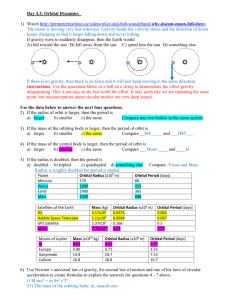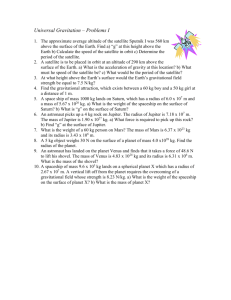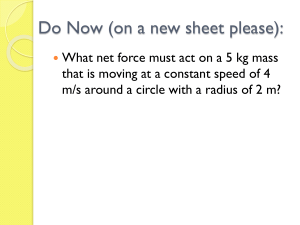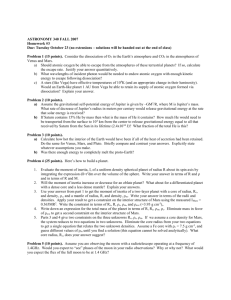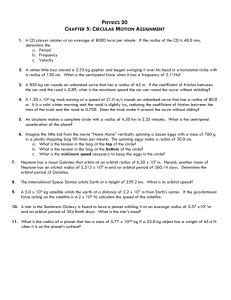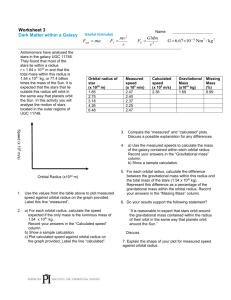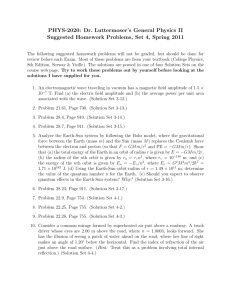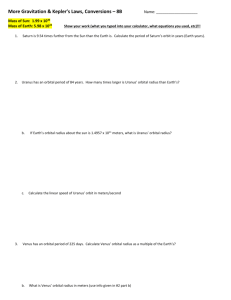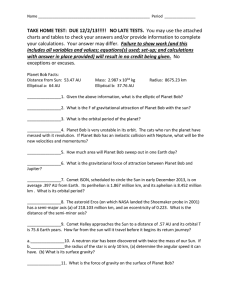Kepler's Laws and Planetary Motion
advertisement
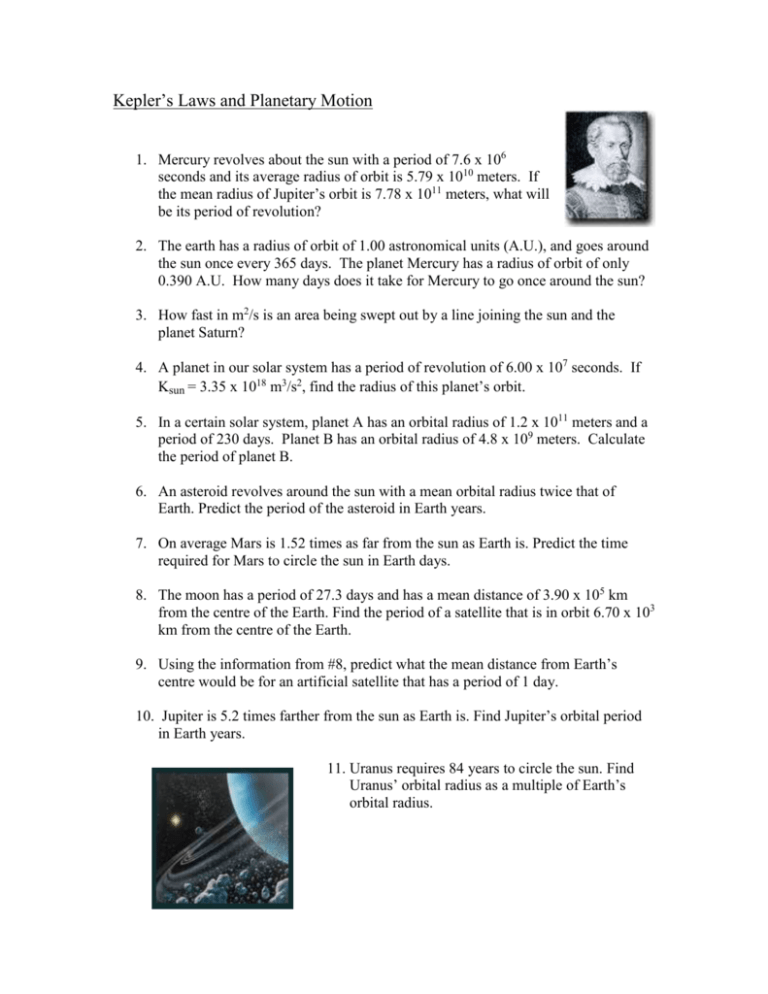
Kepler’s Laws and Planetary Motion 1. Mercury revolves about the sun with a period of 7.6 x 106 seconds and its average radius of orbit is 5.79 x 1010 meters. If the mean radius of Jupiter’s orbit is 7.78 x 1011 meters, what will be its period of revolution? 2. The earth has a radius of orbit of 1.00 astronomical units (A.U.), and goes around the sun once every 365 days. The planet Mercury has a radius of orbit of only 0.390 A.U. How many days does it take for Mercury to go once around the sun? 3. How fast in m2/s is an area being swept out by a line joining the sun and the planet Saturn? 4. A planet in our solar system has a period of revolution of 6.00 x 107 seconds. If Ksun = 3.35 x 1018 m3/s2, find the radius of this planet’s orbit. 5. In a certain solar system, planet A has an orbital radius of 1.2 x 1011 meters and a period of 230 days. Planet B has an orbital radius of 4.8 x 109 meters. Calculate the period of planet B. 6. An asteroid revolves around the sun with a mean orbital radius twice that of Earth. Predict the period of the asteroid in Earth years. 7. On average Mars is 1.52 times as far from the sun as Earth is. Predict the time required for Mars to circle the sun in Earth days. 8. The moon has a period of 27.3 days and has a mean distance of 3.90 x 105 km from the centre of the Earth. Find the period of a satellite that is in orbit 6.70 x 103 km from the centre of the Earth. 9. Using the information from #8, predict what the mean distance from Earth’s centre would be for an artificial satellite that has a period of 1 day. 10. Jupiter is 5.2 times farther from the sun as Earth is. Find Jupiter’s orbital period in Earth years. 11. Uranus requires 84 years to circle the sun. Find Uranus’ orbital radius as a multiple of Earth’s orbital radius. Answers 1. 3.74 x 108 s 2. 88.9 days 3. 6.9 x 1015 m2/s 4. 2.29 x 1011 m 5. 1.84 days 6. 2.8 years 7. 684 days 8. 88.6 minutes 9. 4.3 x 104 km 10. 11.86 years 11. 19.2 times Earth radius
